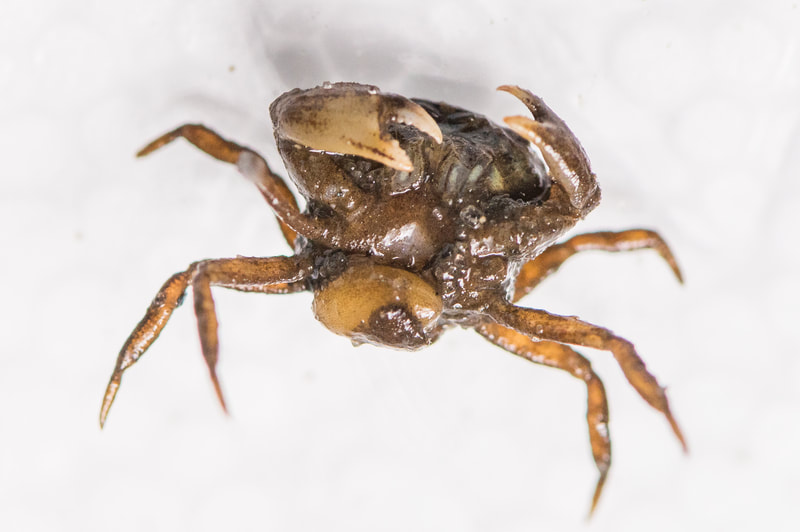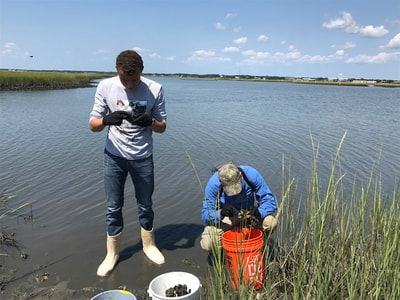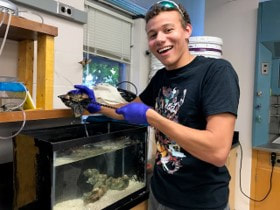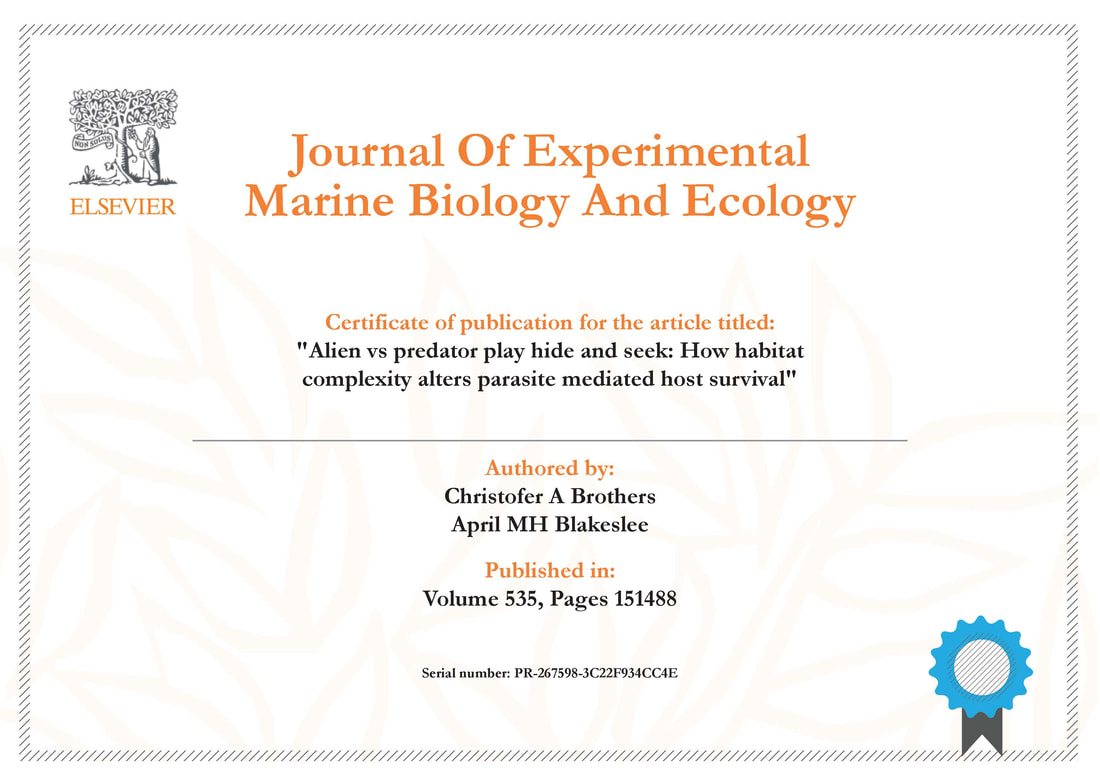Congratulations to Christofer Brothers for getting his honors thesis research published at JEMBE!12/4/2020
Very excited to report that former undergraduate in the lab, Christofer Brothers, successfully got his ECU honors thesis research (2016-2018) published in the Journal of Experimental Marine Biology and Ecology this month! Christofer is now doing exciting research towards his PhD at UC Davis, but I know will continue to keep these little mud crabs in his heart. :) The paper abstract and a link to the article are below:
www.sciencedirect.com/science/article/pii/S002209811930320X?casa_token=oayH2WPJOsQAAAAA:WHVkLQ36mpgs4APOn8D9h7IIwrw_ARFw6auNsGfRreo7txowG2fc9JHZluoZDpbirdQlmvsf8w Alien vs predator play hide and seek: How habitat complexity alters parasite mediated host survival Christofer A. Brothers April M.H. Blakeslee Highlights • Native mud crabs are impacted by a non-native parasite in southeastern estuaries. • Predation susceptibility is influenced by infection status and habitat complexity. • Predation rates are highest in infected crabs in simple habitat. • Infected and uninfected crabs are more protected from predation in complex habitat. • Habitat usage differs in infected crabs versus uninfected crabs. Abstract Parasites can greatly affect the behavior of their hosts, influencing how they respond to biotic and abiotic factors within their communities. Some parasites are particularly impactful, causing significant reproductive and behavioral changes in hosts relative to uninfected conspecifics. In eastern North America, a non-native parasitic barnacle, Loxothylacus panopaei (Gissler, 1884), has severe reproductive impacts on native panopeid mud crab hosts, resulting in castration. Moreover, the parasite has been documented to induce significant behavioral changes, such as reducing mud crab activity, influencing predator-prey relationships, and enhancing hiding behaviors in infected host crabs. Yet much remains to be understood regarding the host's ability to escape predators in heterogeneous environments. We investigated the effects of L.panopaei parasitism on mud crab (flatback mud crab, Eurypanopeus depressus (Smith, 1869)) survival in simple versus complex habitats. In lab mesocosm experiments, habitat heterogeneity was manipulated using oysters and gravel, and predatory pressures came from two common predatory crabs in southeast Atlantic estuaries: the Atlantic mud crab, Panopeus herbstii (H. Milne Edwards 1884) and the stone crab, Menippe mercenaria (Say, 1818). We found L.panopaei-infected E. depressus crabs to have the lowest survival rates in the simple gravel habitat, while the crabs with the highest survival were uninfected crabs in the complex oyster habitat. Moreover, we detected differences between uninfected and infected crabs in habitat usage (oyster versus gravel) within the complex habitat. This study demonstrates the complexity of predator-prey dynamics in the face of impactful parasitism and global change, including the introductions of species to new communities where they may have strong impacts on host populations and community interactions. Comments are closed.
|
|



